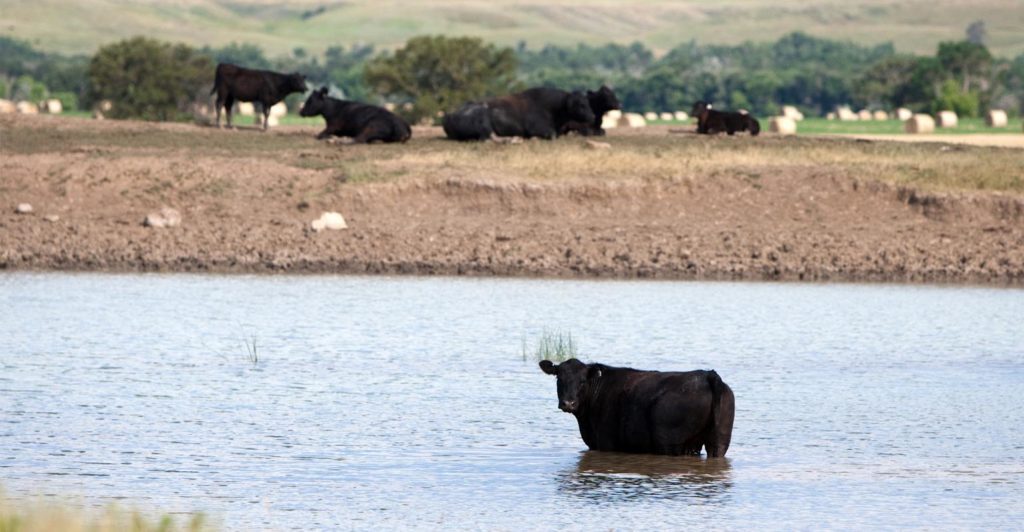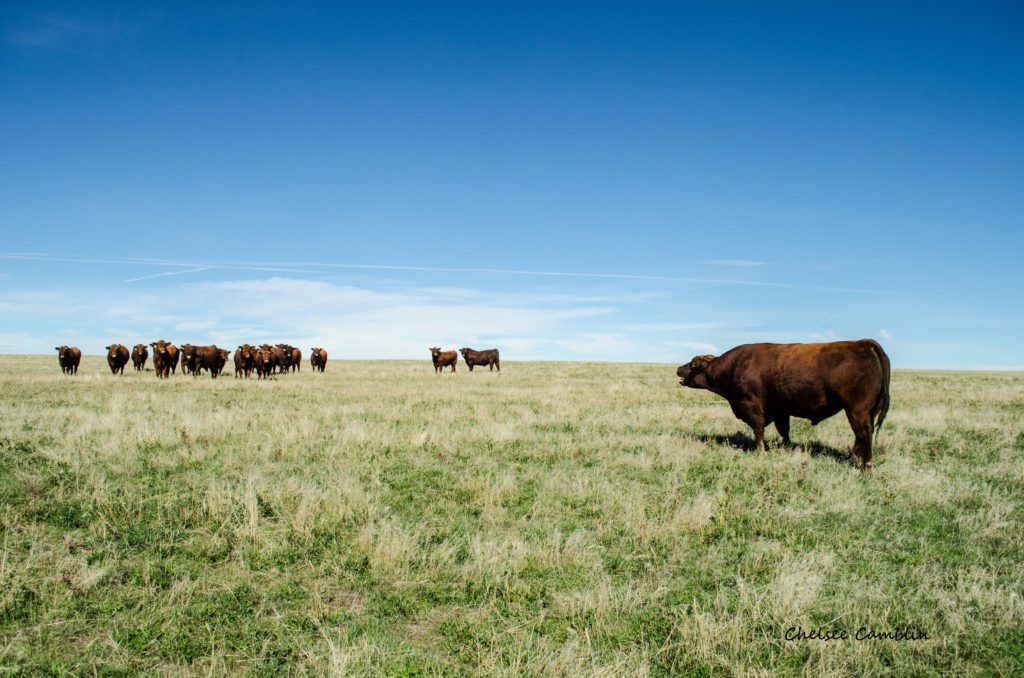With drought and hot summer days coming, follow tips to meet various needs of your herd.
The amount of water a cow requires daily varies depending on environmental temperature, lactation status, weight, etc. During summer with temperatures about 90 degrees F, data suggests a lactating cow needs 2 gallons of water per 100 pounds of body weight. Using this rule, a spring calving cow weighing 1,300 pounds would require about 26 gallons of water, plus another 5 to 10 gallons for the calf.
Make sure the calf can reach the tank to drink. Also, providing a tank for calves only is a good management practice. A tank set to the side, filled by the overflow from the cow tank, allows for the calves to drink at the same time as the cows.
As for non-lactating cows and bulls, they require 1 gallon of water per 100 pounds of body weight.
Considerations for cattle
What is the space requirement? In larger pastures, a rule-of-thumb is to have enough water and tank space for 10% of the herd. Allow 12 inches of perimeter for circular tanks and 18 inches for straight-side tanks per animal. Contact your local USDA Natural Resources Conservation Service to help design a watering system.
Also, during late-summer, the appearance of blue-green algae increases in stagnant water. Blue-green algae is toxic to all classes of cattle. Be watchful for colonies of blue-green algae that appear as blue-green scum at or below the water surface. Different than other algae, blue-green algae does not appear as a mat, but stays dispersed in the water and moves freely with the wind.
When looked at closely, blue-green algae appear as fine grains of green sand or grass clippings. Not all blue-green algae is blue-green, but it can also appear as red. More information about blue green algae can be found in the article, Blue-Green Algae and Livestock.
Resources during drought
There are multiple factors involved in the decision-making process, with some being more challenging than others. Emotion is one factor that can make the decision-making process more difficult.
Oftentimes, the ranch is seen not only as a business, but also as a lifestyle. Accordingly, it can be difficult to remove the emotions from decision-making.
When it comes to making tough decisions, utilize resources that can help ensure informed decisions. There are multiple people who can provide helpful information, including fellow ranchers, agriculture lenders, veterinarians and Extension professionals. SDSU Extension offers multiple tools and resources to provide information. These resources can be found online at South Dakota State University.
Source: SDSU Extension








